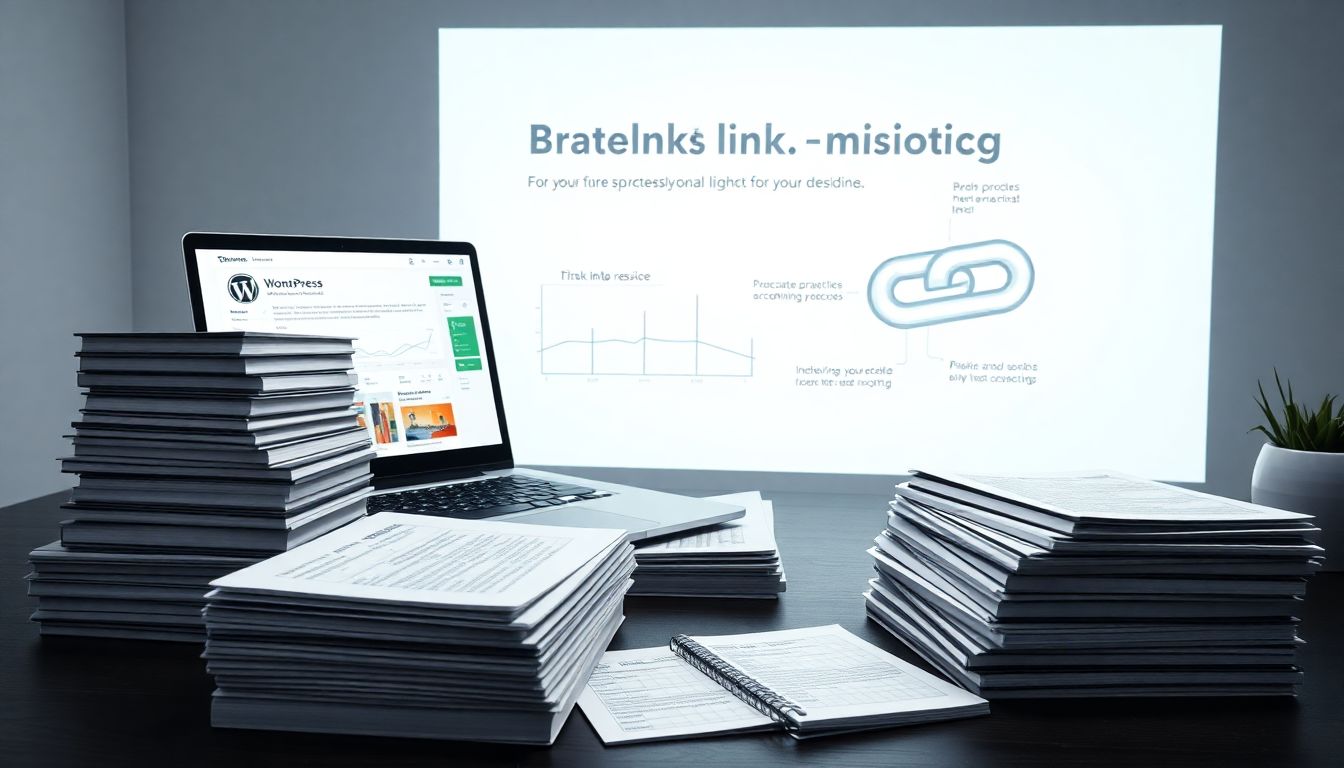
Backlinks are a crucial factor in SEO, with studies showing that websites with high-quality backlinks can rank significantly higher in search results. For WordPress blogs, these links can enhance visibility and drive organic traffic. This article outlines best practices for building valuable backlinks, boosting your blog's search engine performance.
Understanding Backlink Quality and Relevance
What Makes a Backlink Valuable?
High-quality backlinks stem from authoritative sites, are contextually relevant, and feature diverse anchor text. Low-quality backlinks can dilute credibility and harm rankings. For instance, a link from a renowned tech site is valuable; however, a link from an unrelated blog won’t provide the same benefits.
Anchor Text Optimization
Diverse anchor text helps maintain a natural link profile. Avoid keyword stuffing; instead, use phrases like "check out this guide" or "learn more here." This keeps links genuine and user-friendly.
Assessing Backlink Profiles
Utilize tools like Ahrefs or SEMrush to review current backlinks. Identify toxic links that may harm your SEO and consider disavowing them if necessary.
Effective Backlink Building Strategies for WordPress Blogs
Guest Blogging
Identify reputable websites that accept guest posts. Craft engaging, informative content to include relevant links back to your blog. Notable campaigns have increased blog traffic significantly, showcasing the effectiveness of guest blogging.
Broken Link Building
Find broken links on similar websites. Reach out to the site owners, offering your content as a replacement. Tools like Check My Links and Broken Link Checker simplify the process of identifying these opportunities.
Resource Link Building
Create valuable resources like infographics or comprehensive guides. Promote these materials to target audiences. Successful resource link-building involves reaching out and establishing connections, enhancing your blog's authority.
Leveraging WordPress Plugins and Tools
SEO Plugins for Backlink Management
Popular WordPress plugins like Yoast SEO and Rank Math assist in backlink management. They help optimize content and analyze link quality. However, do not rely solely on plugins; always engage in manual link monitoring.
Backlink Monitoring Tools
Tools such as Ahrefs and SEMrush track backlink growth. Regular monitoring helps spot issues early and refine your strategies. Use these tools to analyze competitor backlinks and identify potential opportunities.
Internal Linking Strategies
Internal links enhance SEO and user experience. Implement a strategy that connects related posts. This helps distribute link equity throughout your site and encourages visitors to explore more content.
Avoiding Black Hat Backlink Techniques

Risks of Black Hat SEO
Engaging in black hat techniques can lead to penalties from search engines. Avoid tactics like link farms and paid links, which can harm your site's reputation and ranking.
Identifying and Removing Spam Backlinks
Regularly check for spammy backlinks using tools like Google Search Console. Disavow any harmful links promptly to maintain a healthy backlink profile.
Building a Sustainable Backlink Strategy
Focus on long-term growth through ethical practices. Creating high-quality content attracts genuine links. Avoid shortcuts that may lead to quick gains but lasting damage.
Measuring and Analyzing Backlink Performance
Key Metrics to Track
Monitor the number of backlinks, their domains' authority, anchor text diversity, and traffic generated from these links. Analyzing these metrics provides insights into your backlink strategy's effectiveness.
Using Google Analytics and Search Console
Integrate Google Analytics and Search Console to analyze traffic patterns and the impact of backlinks. Track changes in rankings and audience engagement to refine your approach.
Regular Backlink Audits
Conduct regular audits of your backlink profile. Monthly or quarterly reviews help to identify trends and make necessary adjustments to your strategies.
Conclusion
Building high-quality backlinks is essential for the success of your WordPress blog. Implement these best practices to enhance your online presence and improve search rankings. Start today by integrating these strategies and watch your blog thrive!




